Plasma Air Sterilizer: Everything You Need to Know
What is a Plasma Air Sterilizer?
A plasma air sterilizer is a type of air disinfection equipment that utilizes plasma technology for sterilization. Its core function is to maintain a healthy and clean indoor living and working environment by eliminating harmful microorganisms and pollutants in the air.
The purification technology of plasma air sterilizers relies on the unique properties of plasma. Plasma, often referred to as the "fourth state of matter" (in addition to solid, liquid, and gas), is a partially ionized gas containing charged particles such as electrons, ions, and neutral atoms. This type of sterilizer can operate effectively under normal indoor temperature and pressure conditions, without the need for extreme environmental controls, making it highly adaptable to various indoor scenarios.
It is worth noting that professional manufacturers like Jiangyin Jianshifu Equipment Co., Ltd., which has been engaged in the disinfection equipment industry since 1993, integrate mature plasma technology into their product development, ensuring the stability and reliability of their plasma air sterilizers.
How Does a Plasma Air Sterilizer Work?
The working principle of a plasma air sterilizer revolves around the generation of an asymmetric plasma electric field through high-voltage and high-frequency pulse discharge. When the equipment is in operation, the internal device creates this special electric field, which causes the air molecules in the surrounding area to undergo ionization and excitation, forming a large amount of plasma.
In this plasma environment, a series of electrochemical reactions occur. The high-energy particles in the plasma (such as electrons, hydroxyl radicals, and ozone) can directly attack the cell walls and membranes of microorganisms like bacteria, viruses, and fungi. They disrupt the structure of microbial proteins and nucleic acids (such as DNA and RNA), rendering the microorganisms inactive and unable to reproduce, thereby achieving the effect of sterilization and disinfection.
Beyond sterilization, the plasma also plays a role in removing odors, smoke, and dust. For odorous substances (such as formaldehyde, benzene, and volatile organic compounds), the high-energy particles in the plasma break down their chemical bonds, converting them into harmless substances like water and carbon dioxide. For smoke and dust particles, the charged particles in the plasma attach to the surface of the particles, making them aggregate into larger particles that are then captured by the equipment's filter or settled under the influence of gravity, thus purifying the air.
What Are the Advantages of a Plasma Air Sterilizer?
When compared to UV air sterilizers (another common type of air disinfection equipment), plasma air sterilizers exhibit several distinct advantages:
High Sterilization Efficiency: Plasma can achieve comprehensive sterilization without dead angles. Unlike UV air sterilizers, which require direct exposure to UV light to kill microorganisms (and thus may leave dead angles in areas not reached by the light), plasma can spread throughout the indoor space, effectively eliminating microorganisms in the air and on the surfaces of objects, with a sterilization rate that often exceeds 99%.
Environmental Friendliness: High-quality plasma air sterilizers (such as those produced by manufacturers with professional production lines and testing equipment like Jiangyin Jianshifu Equipment Co., Ltd.) are designed to control the generation of by-products. While some UV air sterilizers may produce ozone in excess of safe limits when used improperly, advanced plasma air sterilizers can minimize ozone emission to a level that meets national safety standards, avoiding secondary pollution to the indoor environment.
Efficient Degradation of Pollutants: In addition to sterilization, plasma air sterilizers excel at degrading harmful pollutants in the air. They can effectively break down volatile organic compounds (VOCs) such as formaldehyde and benzene, which are difficult for UV air sterilizers to handle. This makes plasma air sterilizers more suitable for indoor environments with high requirements for air quality, such as newly decorated rooms or spaces with chemical odor emissions.
Low Energy Consumption: Plasma air sterilizers typically have lower energy consumption compared to some high-power UV air sterilizers. Their operation relies on the efficient conversion of electrical energy into plasma energy, without the need for continuous high-energy light emission like UV lamps, resulting in long-term energy savings during use.
Long Service Life: The core components of plasma air sterilizers (such as the plasma generation module) have a longer service life than traditional UV lamps. UV lamps need to be replaced regularly (usually every 6-12 months) due to light attenuation, while the plasma generation module can maintain stable performance for several years under normal use, reducing the frequency and cost of maintenance and replacement.
No Consumables Needed for Life: Unlike some air purifiers that require regular replacement of filters (a recurring consumable cost), most plasma air sterilizers do not require additional consumables after purchase. The plasma generation process does not rely on replaceable filter materials, meaning users only need to perform simple cleaning and maintenance on the equipment, resulting in "one-time investment, lifetime no consumables" cost-effectiveness.
Which Scenarios Are Plasma Air Sterilizers Suitable For?
Plasma air sterilizers have a wide range of applications due to their high adaptability and comprehensive purification capabilities. The following are common applicable scenarios:
Hospitals: Hospitals have strict requirements for air quality, as they are high-risk areas for cross-infection of microorganisms. Plasma air sterilizers can be used in wards, operating rooms, intensive care units (ICUs), and outpatient waiting areas to eliminate bacteria, viruses (such as influenza viruses and coronavirus), and pathogenic microorganisms in the air, reducing the risk of cross-infection among patients, medical staff, and visitors.
Homes: Indoor home environments are closely related to the health of family members, especially for families with elderly people, children, or individuals with allergies or weak immunity. Plasma air sterilizers can remove dust mites, mold spores, pet dander, and harmful gases (like formaldehyde from furniture and decoration materials) in the home air, creating a healthy living environment.
Nursing Homes: The elderly in nursing homes have relatively weak immune systems and are more susceptible to respiratory diseases caused by poor air quality. Plasma air sterilizers can maintain clean air in dormitories, activity rooms, and dining halls of nursing homes, reducing the incidence of colds, pneumonia, and other diseases among the elderly.
Kindergartens and Schools: These are crowded public places with high frequency of contact among children and students. Plasma air sterilizers can be installed in classrooms, dormitories, and canteens to kill common viruses (such as hand, foot, and mouth disease virus and chickenpox virus) and bacteria in the air, preventing the spread of infectious diseases in groups.
Offices: Office workers spend a long time indoors, and the air in offices is often polluted by volatile organic compounds from office equipment (like printers and copiers), as well as dust and bacteria brought in by employees. Plasma air sterilizers can improve office air quality, reduce employee fatigue caused by poor air, and enhance work efficiency.
Public Places: Places with large passenger flows, such as shopping malls, theaters, subway stations, and airports, have complex air compositions and high concentrations of microorganisms. Plasma air sterilizers can be used in these public areas to purify the air, reduce the spread of pathogens, and protect the health of the public.
Vehicles and Transportation Systems: Cars, trains, planes, and other means of transportation have closed or semi-closed spaces where air circulation is poor, and microorganisms and odors are easily accumulated. Small-sized plasma air sterilizers (suitable for vehicle use) can eliminate bacteria and odors in the car or carriage, providing a clean and comfortable travel environment for passengers.
Manufacturers like Jiangyin Jianshifu Equipment Co., Ltd. also take into account the diverse needs of different scenarios when developing plasma air sterilizers, offering products of different specifications and models to meet the disinfection requirements of various spaces.
How to Choose the Right Plasma Air Sterilizer?
Choosing a suitable plasma air sterilizer requires comprehensive consideration of multiple factors to ensure that it meets actual usage needs. Here are key selection suggestions:
Pay Attention to Brand Reputation: It is advisable to choose products from well-known and reputable manufacturers in the disinfection equipment industry. Manufacturers with long-term industry experience (such as Jiangyin Jianshifu Equipment Co., Ltd., which has been established for over 30 years) usually have more mature production technology, complete quality control systems, and reliable product performance. You can check the brand's market evaluation, customer feedback, and whether it has relevant industry certifications (such as national disinfection product safety certification) to avoid purchasing low-quality products from unknown brands.
Focus on Product Functions: Different plasma air sterilizers may have differences in function. When selecting, you should first clarify your core needs: if the main requirement is to eliminate viruses and bacteria, pay attention to the product's sterilization rate and test reports for specific pathogens; if there is a need to remove formaldehyde and odors, focus on the product's pollutant degradation efficiency. In addition, functions such as intelligent air quality detection, automatic operation mode, and low-noise design can also improve the user experience and are worth considering.
Match the Appropriate Space Size: Each plasma air sterilizer has a specified applicable area (usually indicated in the product manual). When choosing, you should calculate the area of the space where the equipment will be used (e.g., a 20-square-meter bedroom or a 50-square-meter office) and select a product with a matching applicable area. If the equipment's applicable area is smaller than the actual space, the sterilization and purification effect will be insufficient; if it is too large, it will cause unnecessary energy waste and cost increase.
Consider After-Sales Service: After-sales service is an important guarantee for the long-term use of the equipment. When purchasing, understand the manufacturer's after-sales service policies, such as the length of the warranty period (generally, formal manufacturers provide a 1-3 year warranty), whether there are professional maintenance teams, and the convenience of spare parts replacement. Manufacturers with perfect after-sales service (like Jiangyin Jianshifu Equipment Co., Ltd., which focuses on providing comprehensive disinfection solutions) can promptly solve problems such as equipment failures and maintenance during use, avoiding the trouble of "difficult maintenance" after purchase.


 English
English  عربى
عربى 
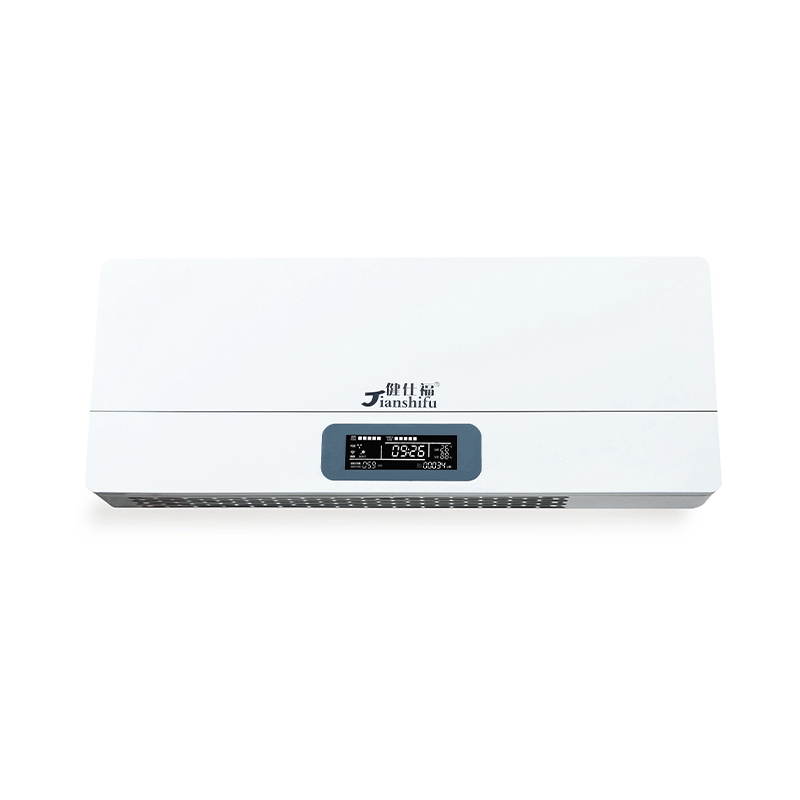
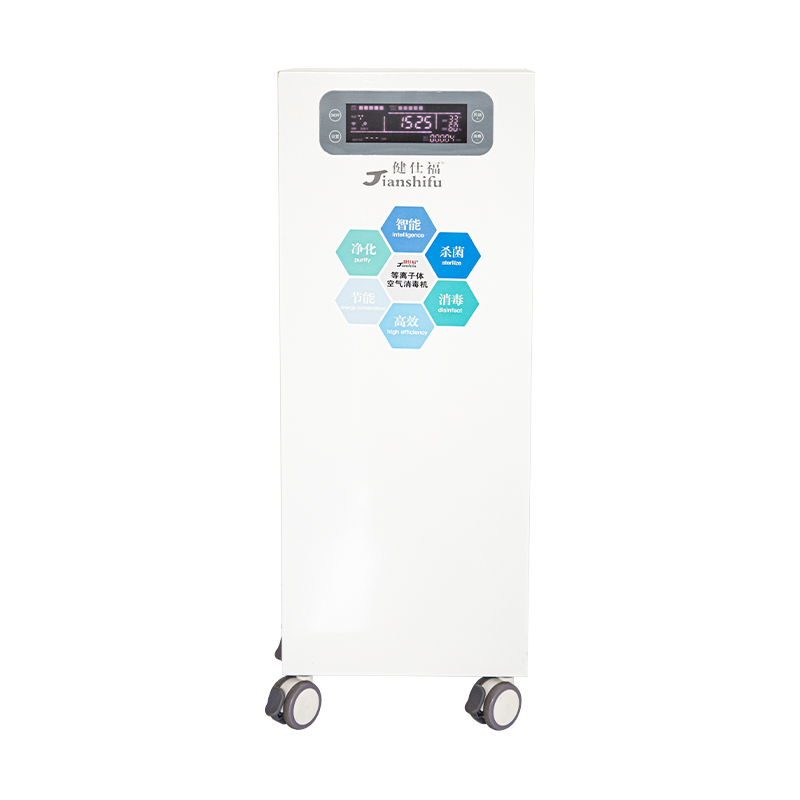
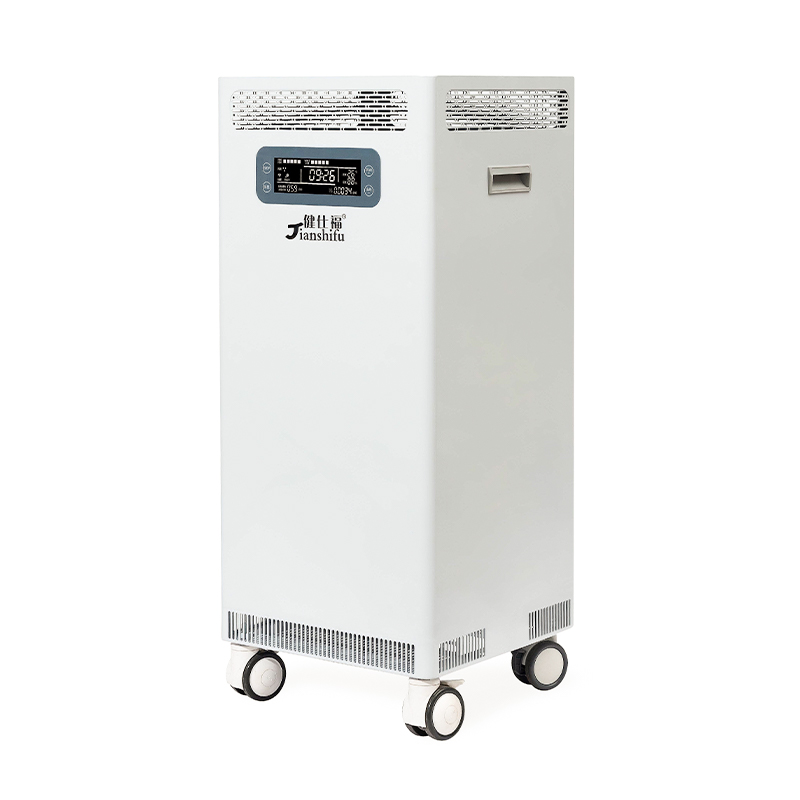
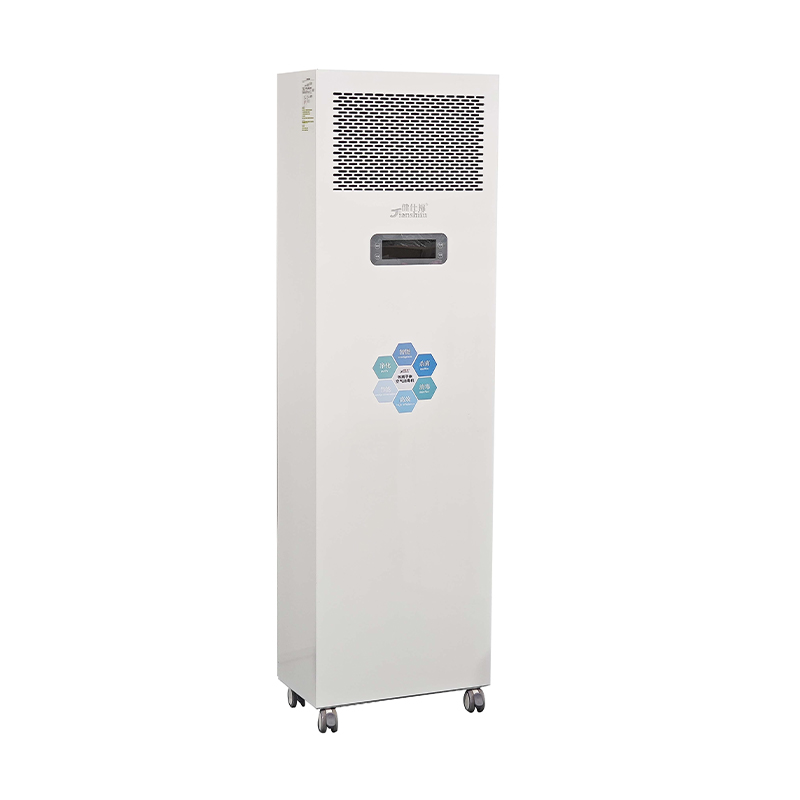
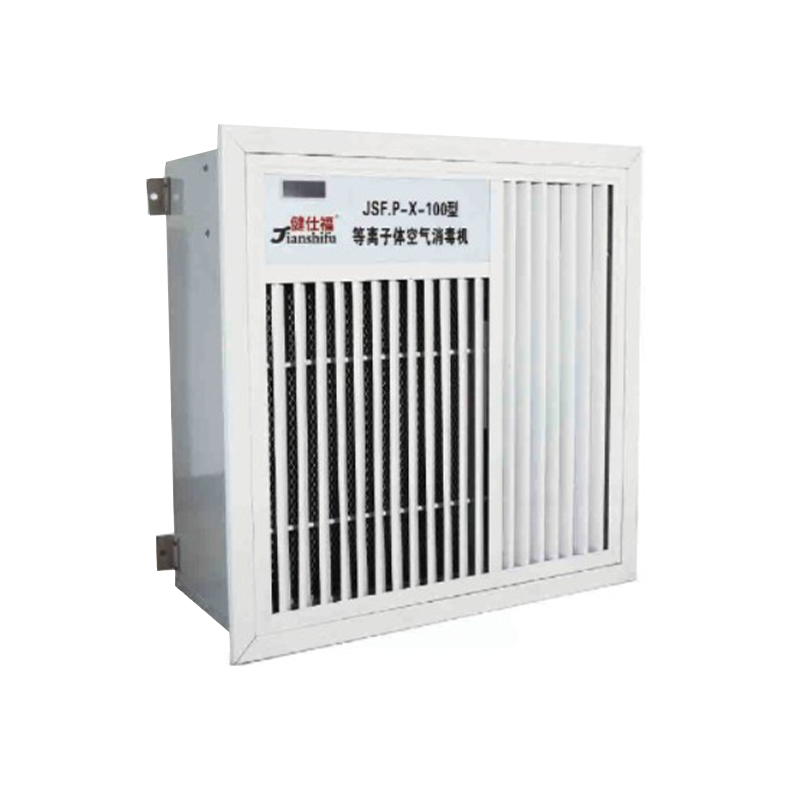

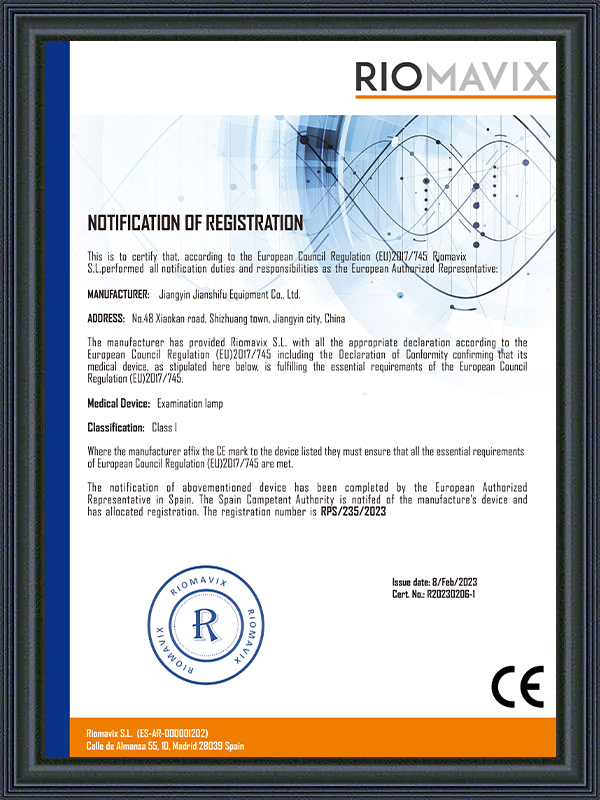
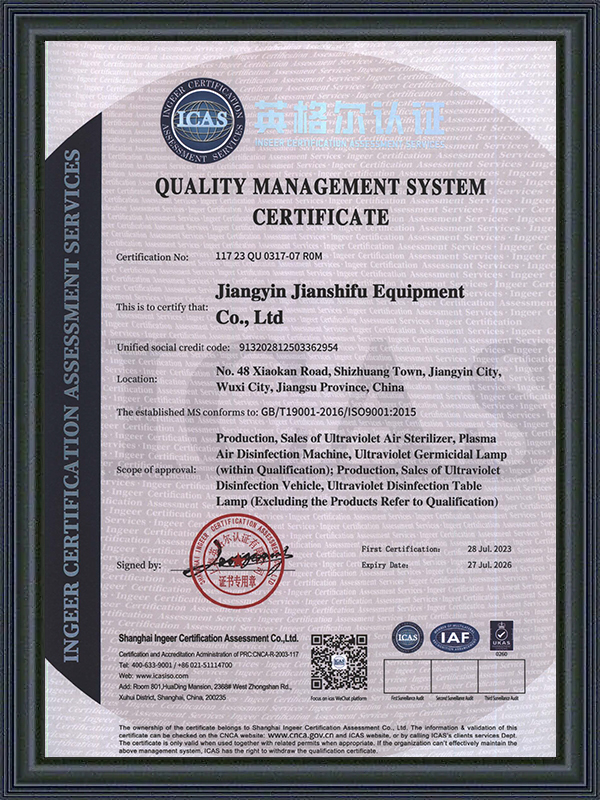
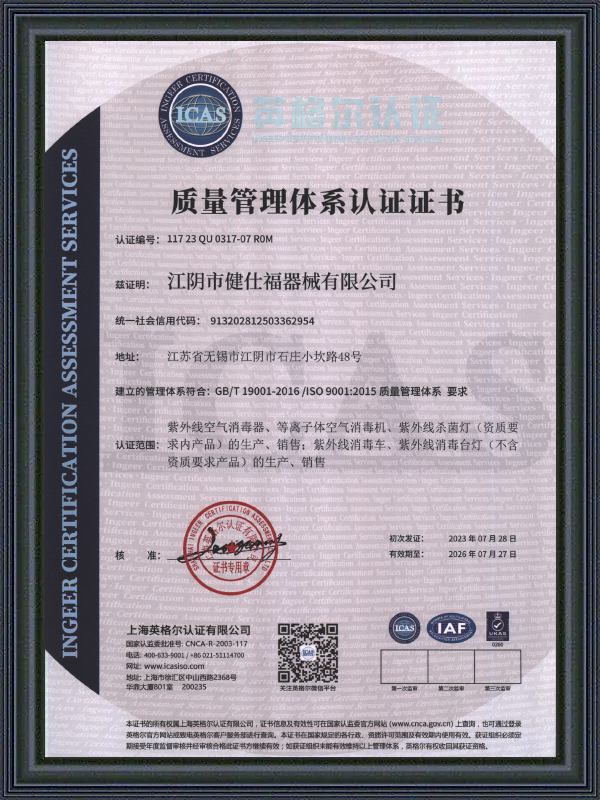
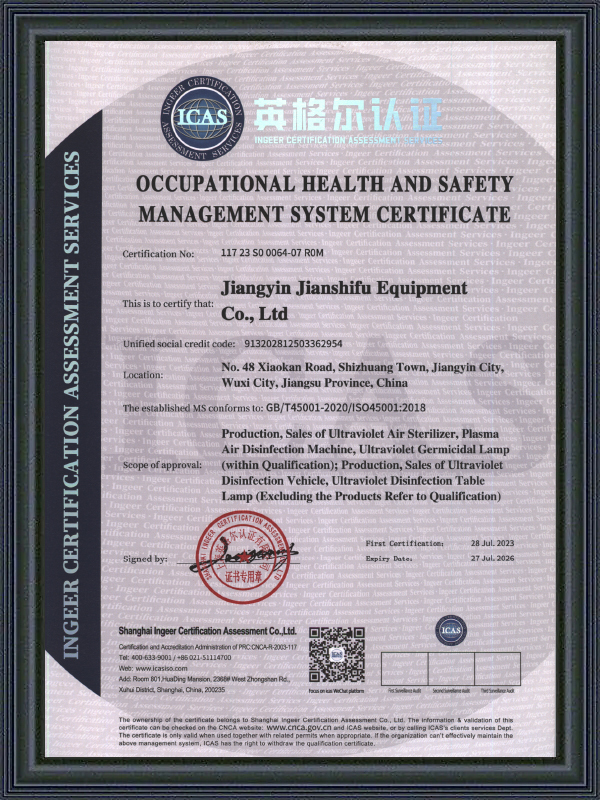
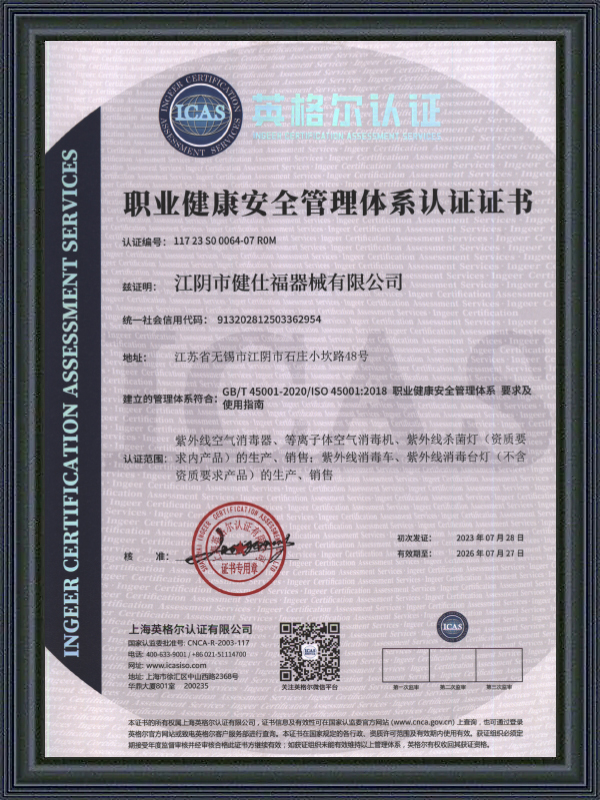
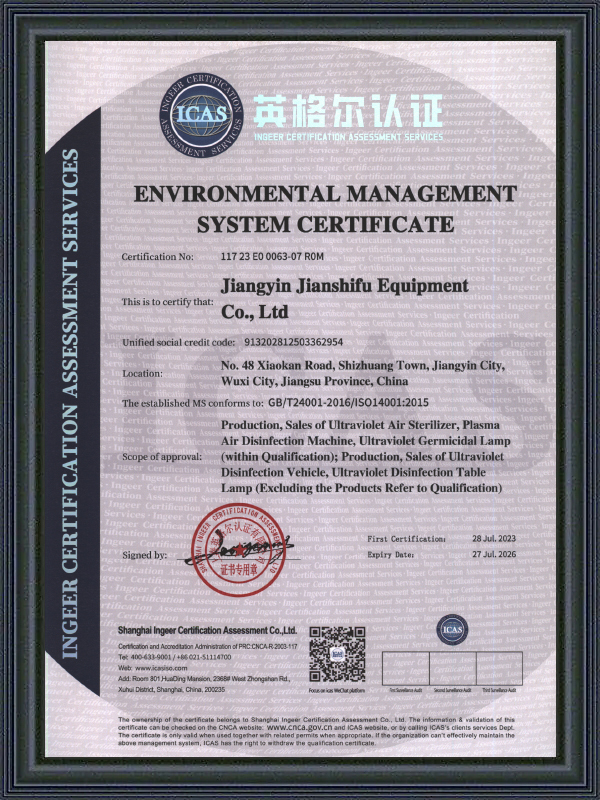
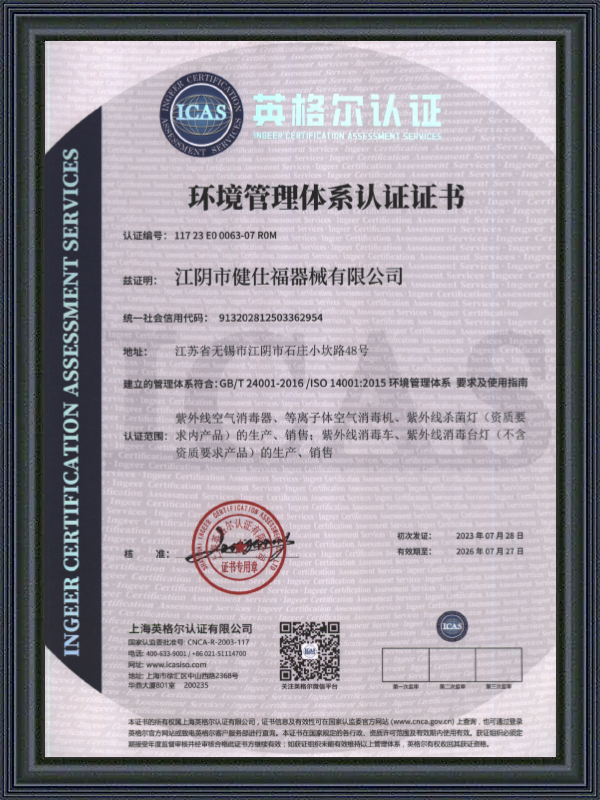

 No 48 Xiaokan Rd, Shizhuang town, Jiangyin, Jiangsu, China
No 48 Xiaokan Rd, Shizhuang town, Jiangyin, Jiangsu, China sara@jsf-qx.com
sara@jsf-qx.com +86-18915253915
+86-18915253915 +86-18861287595
+86-18861287595